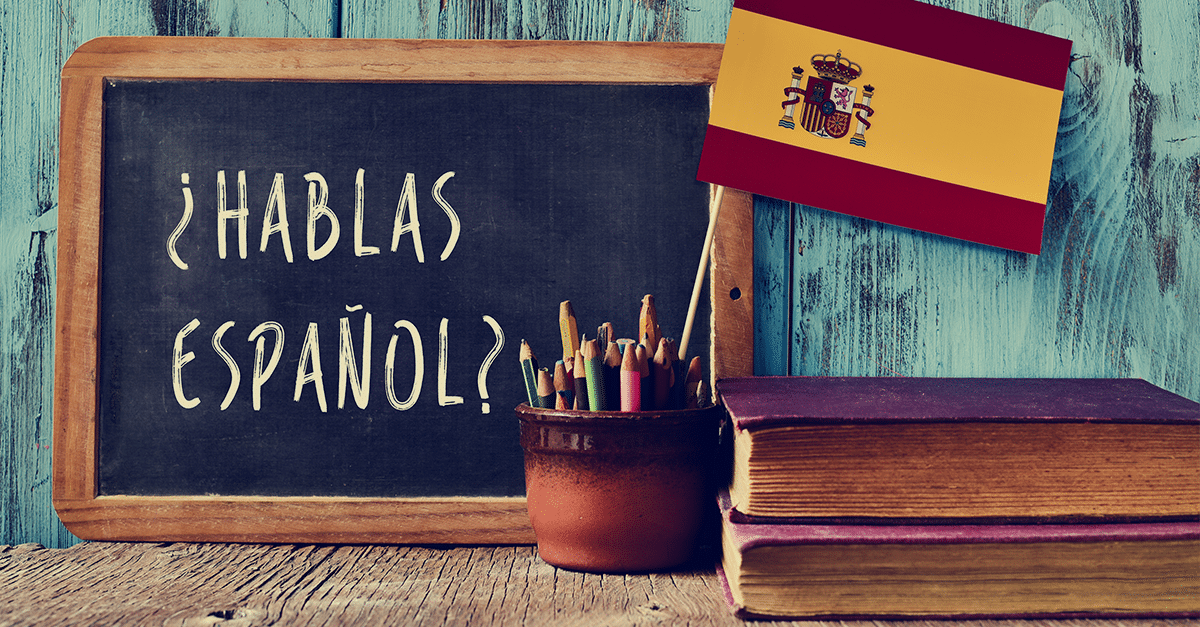
If you are thinking about taking Spanish classes, it’s important to keep in mind the variety of Spanish you want to learn. Most people think of Spanish as a single language. However, Spanish actually has a number of different dialects.
As an English speaker, you know that there are differences in vocabulary and pronunciation in the different countries where English is spoken — and even among different regions of the United States.
Spanish is the same way. While all Spanish dialects share a common origin, each one has its own unique features. You’ll get the most out of your language-learning time if you focus on the dialect of Spanish you’ll be using. For example, are you learning Spanish because you plan to be a digital nomad in Spain? Or do you want to be able to speak Spanish because you want to converse more with your co-workers from Mexico? Knowing which dialect of Spanish you want to learn will help you select the best language-training program for you.
Today we want to introduce you to some of the more widely spoken Spanish dialects.
Castilian Spanish
This form of Spanish is the official language of Spain. It is the dialect that is most commonly taught in schools and used in formal settings such as news broadcasts and government speeches. Castilian Spanish is characterized by its clear pronunciation and use of formalized verb tenses.
In Spain, they use the vosotros form of the verb to talk to a group of more than one person: “You all (you guys) are doing a great job today.”
In Spain they would use the subject and verb agreement for vosotros, but in all Spanish-speaking countries south of the U.S., they would use ustedes to express you plural.
For example – “Do you (all) want to come?”
In Spain: ¿Vosotros queréis venir?
In Mexico/Central and South America: ¿Ustedes quieren venir?
Latin American Spanish
Latin American Spanish is spoken in Mexico, Central America, and South America. It is characterized by its use of informal verb tenses and more relaxed pronunciation. Latin American Spanish often borrows words from indigenous languages such as Nahuatl and Quechua.
Of course, there are also variations in Spanish among all of these countries. For example, in Argentina, Uruguay, Paraguay, Nicaragua and Guatemala, Vos refers to the TÚ (informal you). TÚ is typically used in all other Spanish-speaking countries. Also, special to Argentina, sos means you are. Most other Spanish-speaking countries would use eres.
Andalusian Spanish
Andalusian Spanish is spoken in the southern region of Spain. This dialect started diverging from Castilian Spanish centuries ago. Because of immigration, Andalusian Spanish influenced Latin American Spanish.
Peninsular Catalan
Peninsular Catalan is the Spanish dialect spoken in the Catalonia region of Spain. It shares many similarities with both Castilian Spanish and Andalusian Spanish but also has its own unique features, such as the use of double negatives.
How to Choose the Right Spanish Class for You
You’ll get the most out of your Spanish classes if your instructor is a native speaker of the same Spanish dialect you want to master. For example, if you are studying Spanish because you work with clients in Mexico, choose an instructor from Mexico.
At Fluency Corp, our Spanish classes are tailored to your unique needs. You can zero in both the dialect you want to master as well as the specific vocabulary you need for work and other activities. Set up a free consultation by contacting us at getfluent@fluencycorp.com or (800) 401-3159.










